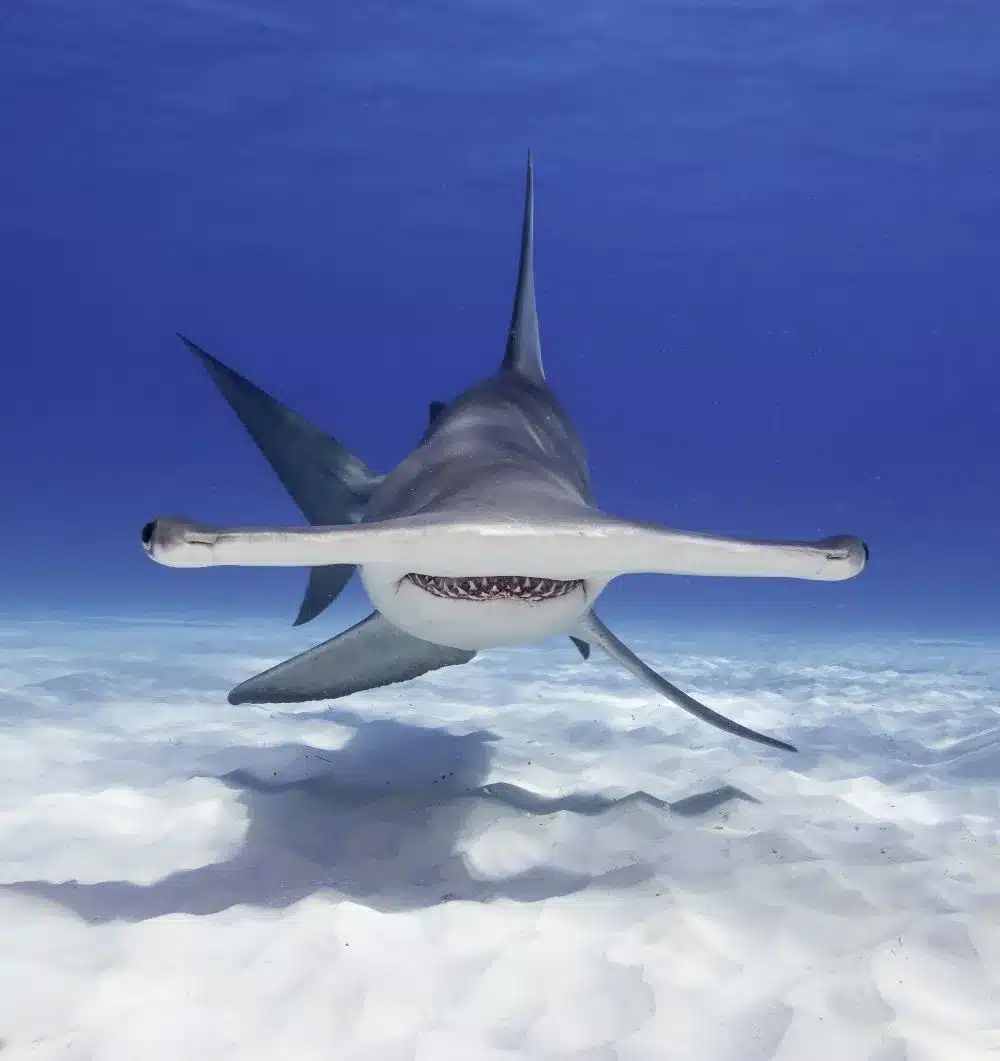About Hammerhead Sharks:
- Named for the unusual and distinctive form of their heads, hammerhead sharks belong to the family Sphyrnidae.
- They are characterized by a flattened hammer- or shovel-shaped head, or ‘cephalofoil’.
- These distinctive heads serve multiple purposes, including granting the sharks360-degree vision as well as better hunting abilities.
- There are nine species of Hammerhead Sharks, each with varying lengths.
- The great hammerhead shark is the largest of all hammerhead species, reaching a maximum known length of 20 feet.
- Distribution:
- They are widely distributed in tropical and temperate marine waters near the coasts and above the continental shelves.
- They may migrate seasonally, moving equatorward during the winter and poleward during the summer.
- o In years with warm El Niño conditions, hammerhead sharks may range many hundreds of kilometres farther than normal.
- Features:
- The upper sides of these fish are greyish-brown or olive-green, and they have white bellies.
- They have very impressive triangular, serrated teeth—like the edge of a saw’s blade.
- The hammerhead also has special sensors across its head that helps it scan for food in the ocean.
- They are viviparous: they retain fertilized eggs within the body and give birth to live young
- They can live 20-30 years.
- They are exothermic animals, meaning that they have no internal way to control their body temperature.
- Hammerhead sharks are one of the most threatened shark families, mainly due to overexploitation, with all species but one (Sphyrna gilberti) being globally listedas Vulnerable, Endangered, or Critically Endangered by the IUCN.
Q1: What is a continental shelf?
A continental shelf is the edge of a continent that lies under the ocean. A continental shelf extends from the coastline of a continent to a drop-off point called the shelf break. From the break, the shelf descends toward the deep ocean floor in what is called the continental slope.
Last updated on June, 2025
→ UPSC Notification 2025 was released on 22nd January 2025.
→ UPSC Prelims Result 2025 is out now for the CSE held on 25 May 2025.
→ UPSC Prelims Question Paper 2025 and Unofficial Prelims Answer Key 2025 are available now.
→ UPSC Calendar 2026 is released on 15th May, 2025.
→ The UPSC Vacancy 2025 were released 1129, out of which 979 were for UPSC CSE and remaining 150 are for UPSC IFoS.
→ UPSC Mains 2025 will be conducted on 22nd August 2025.
→ UPSC Prelims 2026 will be conducted on 24th May, 2026 & UPSC Mains 2026 will be conducted on 21st August 2026.
→ The UPSC Selection Process is of 3 stages-Prelims, Mains and Interview.
→ UPSC Result 2024 is released with latest UPSC Marksheet 2024. Check Now!
→ UPSC Toppers List 2024 is released now. Shakti Dubey is UPSC AIR 1 2024 Topper.
→ Also check Best IAS Coaching in Delhi
























